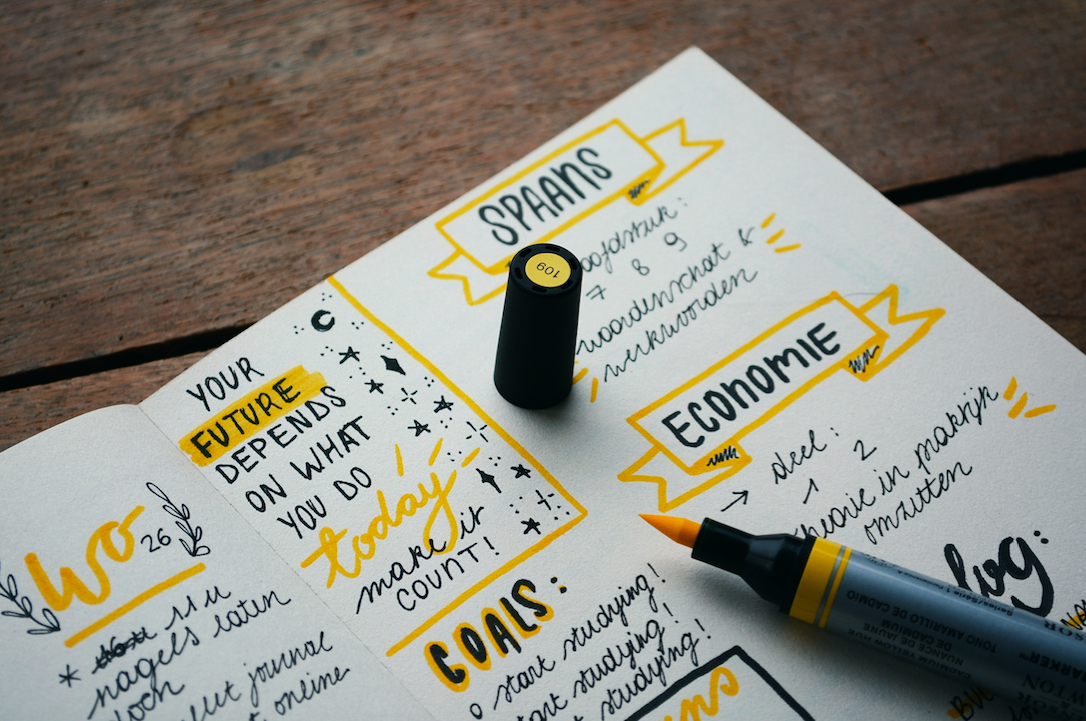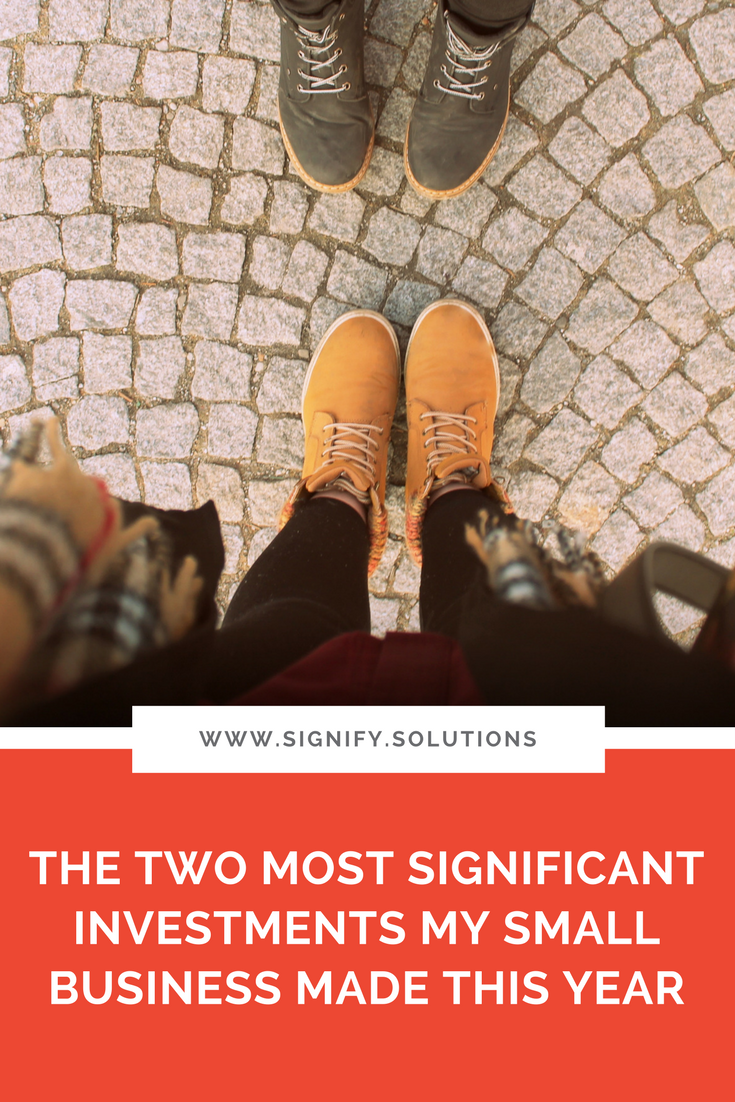Today’s inspiration comes from one of our newest interns here at Signify, Kirsten King. When she approached me about writing a blog post on this topic, I thought it was a terrific idea. I’m a big fan of not only setting goals, but regularly evaluating them.
And one of the biggest hurdles in goal-setting isn’t identifying them, but prioritizing them. After all, you only have so much time, energy, and resources at your disposal. So, you definitely want to ensure that your nonprofit or social enterprise is focused on the right targets.
The exercise Kirsten outlines below is an oldie, but a goodie. It’s also relatively simple. But the beauty is that it will give you a big picture look at your organization, and help you decide which direction to run in. Give it a try, and see your goals come to life.
Happy (belated) New Year!
So, you’ve established some business goals for this year, and you’re all set to tackle them. You will complete your 2019 To Do List, but it may seem a bit overwhelming right now. Often, you may be wondering where to start, how to prioritize, or where you fit in amongst your competitors and even your donors or customers. If this sounds familiar, then you may need to create or restructure your SWOT analysis.
Creating a current SWOT analysis can help pinpoint what your organization lacks, as well as what it offers. Without this assessment, you may quickly fall behind or feel left out. This could happen if you don’t know what trends are up-and-coming, what other organizations in your field are doing, the growth opportunities that are available, or you may be unable to predict what challenges are yet to come. However, knowing each of these items can give you a distinctive edge, and guide you toward both short- and long-term success.
SWOT Analysis… What’s that?
Now, if you’re wondering, “What’s a SWOT analysis?!”, don’t worry, we’ll jump right into that.
First, SWOT stands for Strengths, Weaknesses, Opportunities, and Threats. This is a genius marketing strategy—even if you’re new to marketing—because it identifies a nonprofit or social enterprises’s internal strengths and weaknesses, while also looking into the opportunities and threats that are occurring outside of the organization. (These factors you have no control over, but you may be able to use them to your advantage 😉. )
Why is a SWOT Analysis Important?
Performing a SWOT analysis can help you determine what new strategies should be implemented and what problems need to be resolved. You don’t want to waste time developing and planning a new strategy, if it doesn’t fit with the current or upcoming trends.
Having this information gives you a better understanding of what needs to be prioritized and where you stand when compared to others like you. Here’s a great video, using Starbucks as an example, if you would like to see a SWOT analysis in action.
Since business, trends, marketing, technology, and even the way you interact with your donors or customers are constantly changing, a SWOT analysis should be performed at least once or twice a year to ensure you are on the right track, or outline any changes that should be made. These can be performed solo, or with a team, board members, or key stakeholders.
Completing Your SWOT Analysis
Okay, let’s build your SWOT analysis! We’ve even created a free template to help you out.
One thing you’ll notice immediately is the simplicity of the layout. Once you dig into the items below, you may be tempted to include a lot of details and notes. But, at its heart, a SWOT analysis is just meant to give you a quick overview. Think of it as your organization at a glance, and use it to help guide you in the right direction.
Strengths are determined by the positive assets that your social impact organization owns. They may be tangible or intangible resources. Since you have control over these assets, strengths can help your organization stand out.
Strengths include:
Unique mission or model
Land
Location
Equipment
Copyrights/trademarks
Employees/volunteers
Funding
Marketing
Customer service
Relationships
Weaknesses can be defined as the characteristics of your organization that are unfavorable or may hurt you in some way. These downfalls could potentially hinder your success in both the short- and long-term. Weaknesses may be easily improved with a little more time, effort, and sometimes money.
Weaknesses include:
Outdated technology
Slow or poor communication (internal and/or external)
Poor signage
Little to no online presence
Unreliable cash flow
Lack of systems and processes
Cost
Low reputation
Small team with big workload
Low innovation
Opportunities are the external factors that can help your nonprofit or social enterprise thrive. Options here may be one-time or ongoing opportunities, so it’s especially important to note anything with fixed deadlines or limited availability that need to stay top of mind.
Opportunities include:
Participating in a current or upcoming trend (or event)
Government programs
Niche target market
Increased interest in your cause
New technologies
Growing population
Few competitors
New systems or processes
High demand
Threats are external factors that you cannot control. These negatives require quick thinking to develop new strategies.
Threats include:
Changes in government policies or funding
Uncertain economic factors
Aggressive competition
Unexpected weather
Rising costs
Increase in competition
Change in population
Negative media coverage
Loss of large donor, partner, or sponsor
Taxation
Time to Strategize!
You can start your SWOT analysis by focusing on internal strengths and weaknesses. This should be easier since you know the ins and outs of your organization.
Afterward, you can focus on external factors like your opportunities and threats. This may call for a bit of research and contemplation. But once your SWOT analysis is complete, you should have a better idea on what strategies to prioritize, implement, or refresh.
If done correctly, you’ll be able to use this analysis to create fresh, new ideas for your nonprofit or social enterprise. And remember, the assessment can always be adjusted to meet the current trends and challenges you may face.
Now, with all of this new information, how will you structure your business goals for the year ahead? Have you determined your strengths, weaknesses, opportunities, and threats yet? If not, it’s time to brainstorm new strategies that will help you develop or maintain that sustainable advantage!
Hi! I’m Kirsten M. King, and I absolutely love anything dealing with marketing, from advertising to data and everything in-between. I also love to learn and expand my knowledge on current trends and issues.
I’m currently a senior Marketing Major at Georgia State University. And I hope to take my skills and use them towards a career in project management.
PIN THIS POST FOR LATER:
I’m Kristi Porter, and I help cause-focused organizations understand and execute effective marketing campaigns so they can move from stressed to strategic. Your resources may be limited, but your potential isn’t. Whether you’re a nonprofit, social enterprise, or small business who wants to give back, I’ll show you how to have a bigger impact.










































